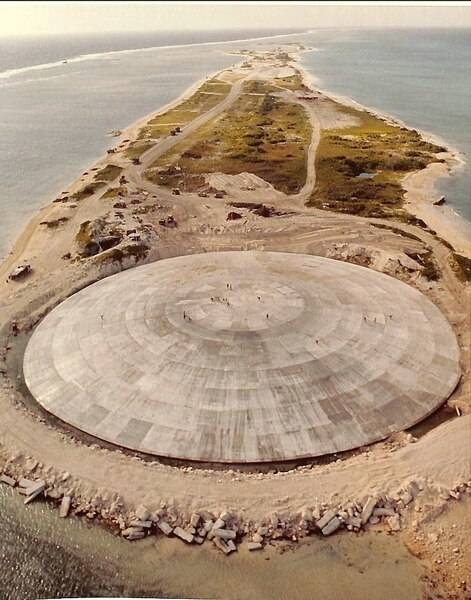Marshall Islands
Photos
10 Photos
Filter Categories
All
Filters
Aerial view of Laura Island, located in the western part of Majuro Atoll in the Marshall Islands. At three meters, Laura Island has the highest elevation of Majuro Atoll. Photo courtesy of the US Department of Defense.
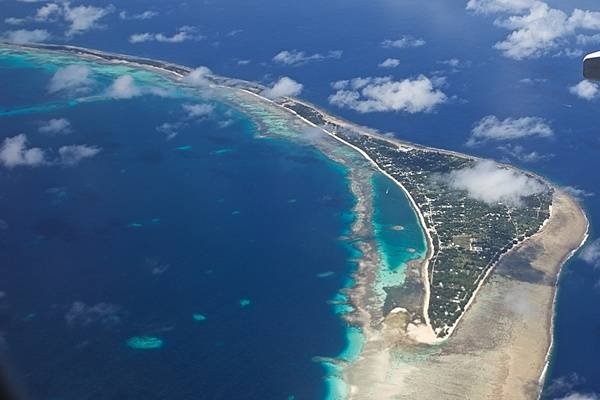
Satellite photo showing most of the Marshall Islands archipelago. Majuro and Arno Atolls in the next image lie to the lower right of this photo. Image courtesy of NASA.

Majuro and Arno Atolls appear as meandering lines of delicate white against a darker ocean background in this satellite image. Areas of shallow water near the shore appear iridescent blue, especially in the southwest portion of each atoll and off the northwest tip of Arno Atoll. Overhead, tiny white clouds dot the sky. Majuro Atoll is 40 km (25 mi) in circumference, and it partially encloses a lagoon of nearly 300 sq km (115 sq mi). The lagoon is far bigger than the atoll itself, whose land area is less than 10 sq km (4 sq mi); walking from the lagoon side to the ocean side of the atoll takes only minutes. Neighboring Arno Atoll encloses three lagoons: two "pinched lagoons" in the northeast and northwest, and a main lagoon of nearly 340 sq km (130 sq mi). Arno's total land area is just 13 sq km (5 sq mi). Scientists have long understood that coral atolls develop around volcanic islands and remain there after those islands have eroded away. To what extent the final shape of an atoll is influenced by wind and ocean wave activity, however, remains a topic of debate. Image courtesy of NASA.

Aerial view of Kwajalein Island. Located in the Marshall Islands, Kwajalein is an important part of the Ronald Reagan Ballistic Missile Test Site in the western Pacific. Photo courtesy of the US Department of Defense.
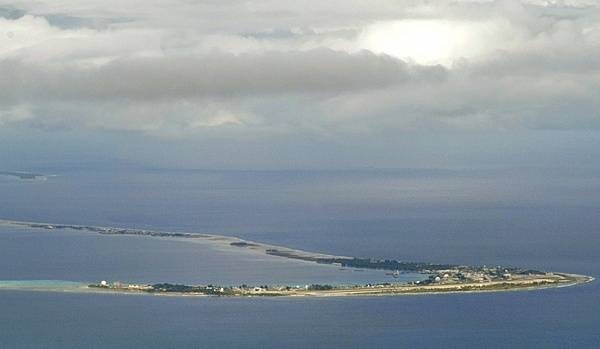
Signpost at the airfield on Kwajalein Island. Photo courtesy of the US Department of Defense.
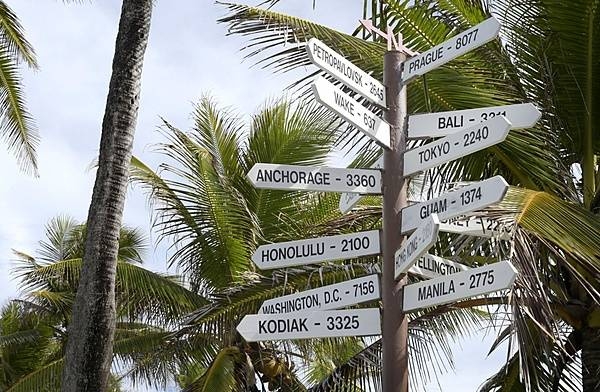
Radars supporting the Ronald Reagan Ballistic Missile Test Site located on the island of Roi-Namur, part of Kwajalein Atoll, in the Marshall Islands. Photo courtesy of the US Missile Defense Agency.

Underwater image of a wave breaking over a coral reef on Kwajalein Atoll in the Republic of the Marshall Islands. Photo courtesy of the US Geologic Survey/ Curt Storlazzi.

Satellite image of Enewetak Atoll. Enewetak Island after which the entire atoll is named is actually the southernmost island at the bottom right. The crater formed by the Ivy Mike nuclear test may be seen near the north cape of the atoll, with the smaller Castle Nectar crater adjoining it. Image courtesy of NASA.
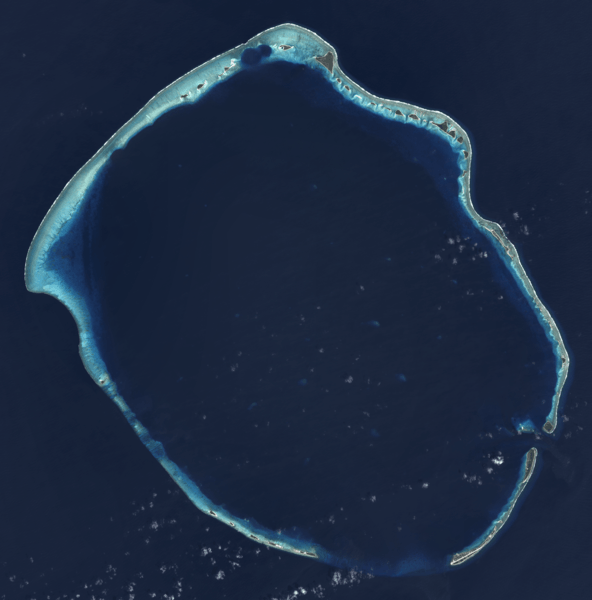
The island of Eniwetok from the air. Photo courtesy of NOAA / James P. McVey.
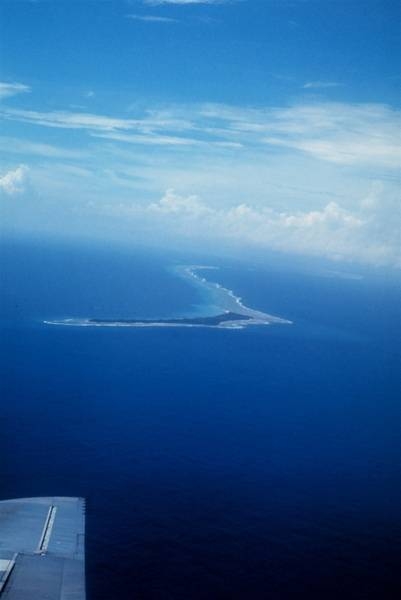
Aerial view of Runit Dome (or Cactus Dome) on Runit Island in Enewetak Atoll. Between 1977 and 1980, the crater created by the Cactus shot of Operation Hardtack I was used as a burial pit to inter 84,000 cubic meters of radioactive soil scraped from the various contaminated Enewetak Atoll islands. The Runit Dome was built to cover the material. Photo courtesy of US Department of Defense.
